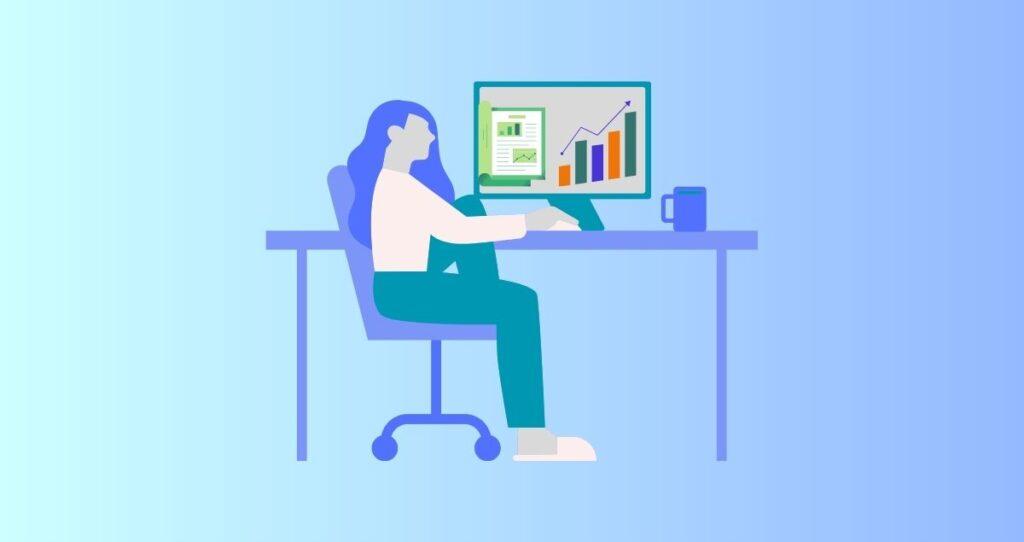Have you been working hard to achieve your financial goals, and yet, your account is still empty? If you are struggling financially and are unable to save money, you are not alone. According to a recent report conducted by Bankrate, 68% of Americans worry that they cannot cover one month of expenses if they lose their jobs. The same report shows that 57% of Americans do not have enough emergency savings, 22% have no emergency savings at all, and 36% have more credit card debts than their emergency savings.
While unemployment and inflation are to blame for the lack of savings, there are strategies you can utilize to save money and take control of your finances. This article will walk you through a step-by-step approach to saving money which is based on making sense of your finances, changing your money habits, growing your income, and implementing smart money-saving techniques.
Without further ado, here is how to save money the right way.
Step 1: Know how much you make
The first step in saving money is knowing how much money you make in the first place. It is common for many hard-working people to not know exactly how much they make which leads to overspending. Most people don’t even have the time to evaluate their incomes and expenses because they are busy working. But, knowing how much you make will help you figure out the amount you should spend and save.
Start by evaluating the total income you have by adding income from all the jobs you have plus the passive income from your investments and bonuses.
For accurate calculations, use your net income also known as your take-home money. This is because your gross income includes taxes and deductions which must be deducted from your earnings. So, using gross income when you are estimating your income leads to inaccurate calculations.
Step 2: Understand your spending habits
Knowing how much you are currently spending is the second step in saving money. Your savings depends on the relationship between your income and expenses.
Here is a simplified savings equation.
SAVINGS = TOTAL INCOME -TOTAL EXPENSES
You can clearly see that how much you spend directly affects your savings. The trick with saving money is that you must try to minimize your expenses which directly increases how much you save.
Here is a list of common expenses for a typical household.
- Rent or mortgage if your house is not fully paid off
- Tax on your property
- Cable
- Phone
- Electricity
- water
- Insurance (health, house, and auto)
- Homeowner’s Insurance
- Auto loans
- Gas
- Credit card debt and other loans
- Food and related shopping
- Kids toys
- Movies (Netflix, Hulu, Amazon Prime, Disney, Redbox, etc.)
- Video games (your online subscriptions, 360 Xbox, play stations, etc)
- Restaurants
- Miscellaneous
Depending on your lifestyle, you might have more or less than the expenses listed here.
After estimating how much you make on each expense, go ahead and calculate the total amount you spend on a monthly basis. That is add every penny you spend and find your total expense.
The goal is to keep your total expenses lower than your total income which is not what most people do. According to this recent study from LendingTree, 60% of Americans live paycheck to paycheck. In other words, people are living lifestyles they cannot afford or are not saving enough which leads to excessive borrowing.
By tracking your spending, you can easily avoid the same fate and take control of your finances.
Step 3: Create a budget and stick to it
At this time, you have two most important numbers to worry about: (1) your total income and (2) your total expenses.
Next, you are going to create a budget.
The reason you need to create a budget is to compare side by side what your income is and all expenditures. This way, you will be able to notice unnecessary expenses you can cut down and those you can eliminate completely.
Your budget will also help you decide on expenses that need more attention than others.
It is critical to understand that you cannot save money without cutting down your expenses. This is why you need to create a budget and figure out how to reduce your expenses at the same time.
You can use online budgeting websites, and apps, or create your own Excel spreadsheet. What matters is not the platform you use. Instead, is how you follow what is written in your budget.
It is a good idea to organize your expenses in a way that makes it easy for you to understand. Whether you organize your expenses by category, needs, or wants, it should make sense and be easy for you to understand and follow.
Related: The 50-30-20 budget rule
Step 4: Cut down your expenses
Saving money often requires making sacrifices on a daily basis. You have to give up something in order to achieve success. If you are currently spending every penny you make, it is time to evaluate your budget and figure out where you are spending more money than necessary and cut back on those expenses.
The following are a few strategies to help you lower your expenses and save money.
Eliminate unnecessary expenses
If you look into your budget, you will realize that not all expenses are important. Meaning that in your budget, there are wants and needs. For example, nothing will go wrong if you don’t have a Netflix subscription. So, start by eliminating these kinds of expenses to free extra cash.
Cut down on your movies and online magazine subscriptions. Do you have Netflix, Hulu, Disney, and Amazon Prime? Cancel all of them or keep one of them. This will give you a chance to save a few bucks.
Save money on your gas, car insurance, and related expenses by using one car, if you and your spouse have schedules that will allow you to use one car. You should also avoid unnecessary driving to save money on gas.
When buying groceries, do not pay premium prices. Shop at cheap places and avoid brand-name products. You should also shop with a list to avoid impulse purchases.
At the same time, avoid buying packaged water, pops, and everything that is prepackaged, premade, and pre-cooked. Always remember that you are buying that package that you don’t eat and paying an employee who packed it.
Additionally, save money by learning how to cook instead of buying fast food or eating out in restaurants all the time. Always take advantage of discounts, clearance, coupons, and other forms of sales for items you need.
Try using generic medications instead of brand-name ones. They are cheaper and cure the same diseases. As long as you are cured that is what matters.
Pay off your debts
When it comes to saving, you need to pay attention to your debts and pay them off as fast as you can. The interest you pay by carrying debt is actually a big expense. For most people interest, fees, and charges on their debts can be as much as dozens of thousands of dollars per year.
For example, it would not make sense to save money if you have an outstanding balance on your credit card. This is because you will be paying a high Annual Percentage Rate (APR) on that balance which is compounded in most cases. As of August 2023, the average APR on new credit card accounts is 24.37%, according to LendingTree. No matter where you invest or save your money, you cannot consistently get a 25% return on investments. That is why the best saving strategy you can implement is to pay off these debts to save on interest charges.
If you currently have debts, pay them off first starting with high-interest debts such as credit card debts.
To pay off your debts use one of the following two debt management strategies which are the Debt Snowball Method and the Debt Avalanche Method.
Related: 6 effective ways to pay off credit card debt
After paying off credit card debts, start paying off long-term debts
Once you are no longer carrying credit card debts, allocate more funds to expenses that will cost you more money in the long run.
These expenses will be your mortgage, car loans, student loans, etc. You need to take care of these debts as fast as you can. This is because your monthly payments include interest. So, by paying off your debts faster, you get to keep that interest all to yourself.
For example, let’s say that you bought a house for $200,000 with a mortgage. By the time you finish paying it off 30 years later, you will have spent close to $400,000 on it depending on your rate. This is because you pay an interest rate every month which is one of the biggest costs of buying a house.
The faster you pay off your loans, mortgage, etc., the more money you will save on interest charges.
Step 5. Establish your savings goals
Having a saving goal is essential for a successful saving journey. Most people fail to save money because they lack financial goals. You can’t just save money and let it sit in your account for many years without a purpose. A savings goal is what keeps you motivated as you can track your progress. The same financial goals also prevent you from touching your savings prematurely for random purchases.
Here are examples of savings goals to start with. Some of these goals may apply to you while others may not.
- 529 college savings plan. If you have children, you can open a 529 college fund for them and put in a few bucks every month.
- Emergency fund. Having an emergency fund is essential as it helps you to take care of emergencies such as expensive medical bills, loss of a job, etc. Here is how you can save for an emergency fund.
- Vacation. If you have a dream vacation, it will be a good idea to put it on your savings goals
- Retirement savings. Everyone eventually retires and having funds to tap into comes in handy during your old age. That is why saving for retirement is the most important decision you will make. Start saving for retirement by boosting contributions to your 401(k) plan or individual retirement account (IRA). These accounts come with tax benefits which are essential in increasing your net worth and building wealth.
- Open an HSA account. A Health Savings Account allows you to save for medical-related expenses with your before-tax money. If you do not spend all of it, you can invest it and withdraw it tax-free after turning 65 and spend it on whatever you want. Read more about the benefits of HSA.
- Save for a down payment on a home. If you are planning to buy a house, it is best to have a large down payment to lower the cost of buying and owning it. For conventional mortgages, you need at least a 20% down payment to avoid paying private mortgage insurance(PMI).
- Save money for your wedding. Most people head to the bank to finance their wedding which is one of the worst financial decisions anyone can make. You can be smart about it and save for your wedding.
- Save money for your business. If you are thinking about starting a business or turning a hobby into a business, you should be saving for your start-up costs as soon as possible.
Step 6. Get paid to save money
Cutting back on your expenses is not enough if you seriously want to save money. You also need to strategically save money in ways that earn you interest without exposing your funds to high risks. In order words, never let your money sit in a bank idle without earning you any form of interest. This is because your money loses value over time due to inflation which you can offset by earning interest on your savings.
According to Statista, the average inflation rate in the U.S. is 3.2% as of September 2023. That is your money is losing 3.2% of its value every year if it is just sitting in a bank with 0% interest. For example, if you had $100 sitting in your account, the value of that money would be equivalent to $96.80 the following year.
Your account will still show $100, but your purchasing power would have been reduced by $3.20. That is if you pay $100 to buy a bike this year, you would have to add $3.20 to buy the same bike next year.
I think you got the idea.
What if you can manage to earn interest on the money you saved? In this case, the effect of inflation on your savings will be eliminated or minimized. You can achieve this goal by putting your money in low-risk deposit accounts or pursuing investments that earn you high returns.
Here are a few accounts to help you earn interest on your savings. Some of these options are less risky such as deposit accounts while others carry higher risks but come with higher returns.
- Savings accounts. As of August 2023, you can earn around 0.43% APY on savings accounts, according to FDIC. High-yield savings accounts can earn you even ten times what a traditional savings account earns. Some banks offer more than 5% when you open a high-yield savings account with them.
- Certificate of Deposit (CD). According to FDIC, you can earn as much as 1.76% APY on a 12-month CD, 1.34% for a 6-month CD, and 1.50% APY on a 24-month CD. To maximize your ROI, consider a special CD with earns as much as 5% or more.
- Invest in Individual Retirement Accounts (IRA). Retirement savings accounts come with a higher return on investment but they also come with risk that depends on investment options in your portfolio.
- Invest in stocks, mutual funds, ETFs, Index Funds, etc. These investment options are risky but they can give you higher returns.
- Buy real estate. Real estate is one of the best ways to earn a high return on your savings. You can either buy rental properties, REITs, commercial properties, or land.
Step 7. Increase your income
If you are living paycheck-to-paycheck, it is time to increase your income. You don’t necessarily need to have a second full-time job. But, you definitely need to find ways to increase your income. It is also easier to save money when you make enough of it.
At the end of the day, you cannot save money if there is not nothing to save. If you can manage to make extra cash through side gigs or a part-time job, then saving money will be much easier for you.
Here are a few ways to make extra cash to increase your savings.
- Freelance work. There are a ton of freelance websites out there such as Fiverr, Upwork, Freelancer.com, and many more with opportunities to monetize your skills. If you have specialized skills such as graphic design, web development, programming, tutoring, copywriting, editing, etc., the opportunities for freelance gigs are endless.
- Part-time jobs and side gigs. If you currently have a full-time job but have nothing left to save, find a part-time job. You can easily find evening work at a local restaurant, hotel, etc. that pays well. You can also drive for Uber and Lyft or take a part-time job for a food delivery company such as Doordash, Ubereats, Home Chef, etc.
- Ask for a raise. Sometimes all you need to make extra cash is to negotiate a higher salary with your current job. If you have the skills, you show up on time, and you go beyond expectations to get the job done, why not ask for a raise at your current job?
- Side hustles. There are plenty of side hustles you can take. Some of them can be done from the comfort of your couch while others require some form of travel. For example, you can get paid to dogsit/walk dogs. Websites like Rover, Pawshake, Wag!, PetBacker, etc. offer exclusive opportunities to make extra cash from walking dogs and related pet care services.
- Sell Unused items online. If you want to make quick cash, start by decluttering your home and selling items you don’t need. Whether you have clothes, unused gift cards, or electronics you can sell them online for quick cash. Refer to the following guides for selling items online. 7 Best websites to sell unused gift cards online, 13 Best Places to sell used electronics online for Cash, and 16 Best places to sell used clothes online for cash.
Related: 49 easy ways to make money fast: A complete guide
Step 8. Automate your savings
Automation of your savings is a practical strategy that makes it easy to save money. Automation takes care of repetitive steps and prevents you from missing a contribution to your savings account. For example, logging into your bank account every month to make a monthly contribution to your savings account can quickly get boring. But, you can easily set up an automatic transfer to your account and forget about it.
The same applies to your retirement savings account. For example, if you have a Roth IRA or a traditional IRA, it will be best to automate your contribution to the account rather than doing it manually every month.
Automation also prevents you from forgetting to make contributions. For example, if you are on vacation, you might forget to make that contribution or fail to make it due to the lack of internet. But, if your contributions were automated, they would successfully be executed even if you are thousands of miles away without access to the internet.
Another strategy to help you save money is to have your paycheck deposited in designated savings accounts directly from your employer. For example, instead of having your entire paycheck deposited in your checking account, you can have a portion of your paycheck deposited in your savings account while the other goes into your checking account. This approach prevents you from spending all your money before making a savings contribution or forgetting to make a contribution.






